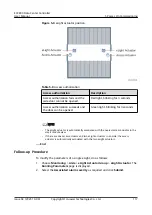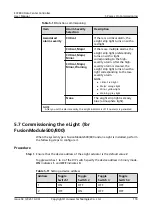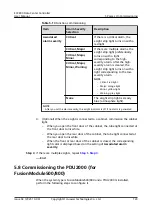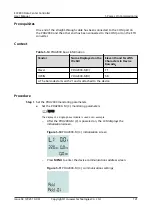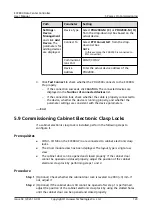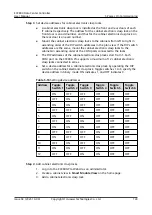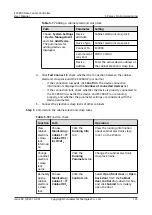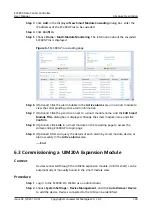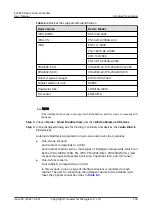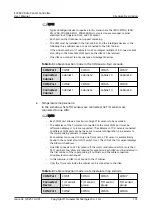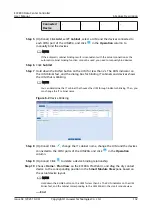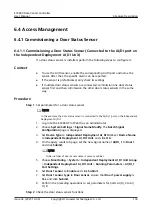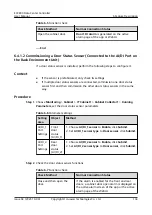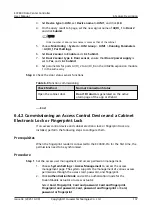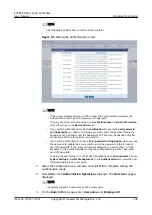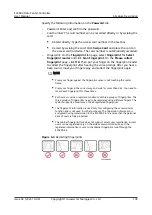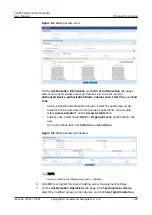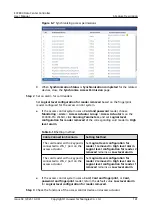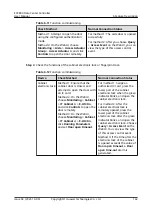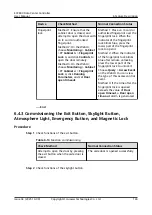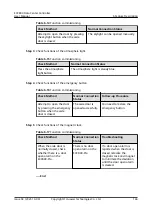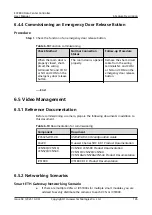
Table 6-2 Devices that support self-identification
Device Name
Device Model
rPDU-MPDU
MD-1324-2004
rPDU-PN
PN1-32I10-20E4G-AV4
rPDU
ZFIF-112-0800
PN1-16X18-8E-AH4W
ZZIF-130-2004
PN1-32I15-20E4G-AV4W
PDU2000-M(C)
PDU2000-32-1PH-20/4-M1/CLEVER
PDU2000-M(H)
PDU2000-32-1PH-20/4-M1/HPX
Smart U space manager
XDUD-D100-S42U
Cabinet electronic lock
DS899
Fingerprint lock
CHD2100-J2ZM
T/H sensor
ENR1DETA
NO TE
If the intelligent device does not support self-identification, perform step 5 to manually add
the device.
Step 3 Choose Home > Smart Module View and click Bind Cabinets and Devices.
Step 4 In the displayed dialog box for binding IT cabinets and devices, click Auto Bind to
bind devices.
Automatic binding is supported in one-to-one and one-to-four scenarios.
●
One-to-one scenario
Each cabinet corresponds to a UIM.
Each cabinet contains two or more types of intelligent components, which can
be the rPDU-MPDU, rPDU-PN, rPDU, PDU2000-M(C), PDU2000-M(H), smart
U space manager, cabinet electronic lock, fingerprint lock, and T/H sensor.
●
One-to-four scenario
Four cabinets correspond to one UIM.
In this scenario, only one type of intelligent devices is monitored in each
cabinet. The port for connecting the intelligent device to the UIM20A must
meet the physical connection rules in
ECC800 Data Center Controller
User Manual
6 Feature Description
Issue 04 (2021-10-09)
Copyright © Huawei Technologies Co., Ltd.
130


